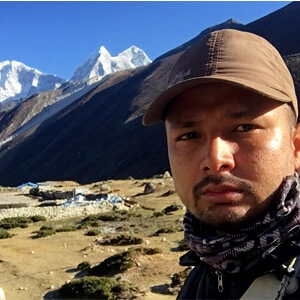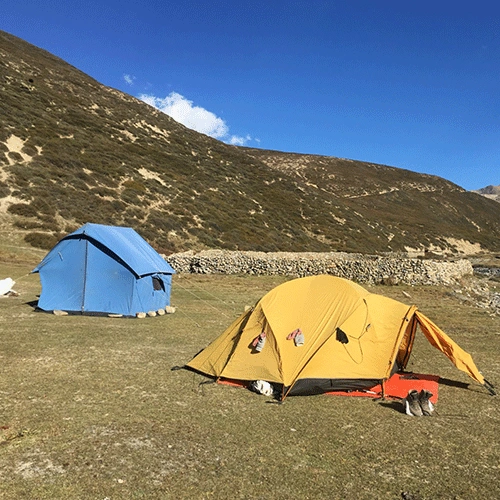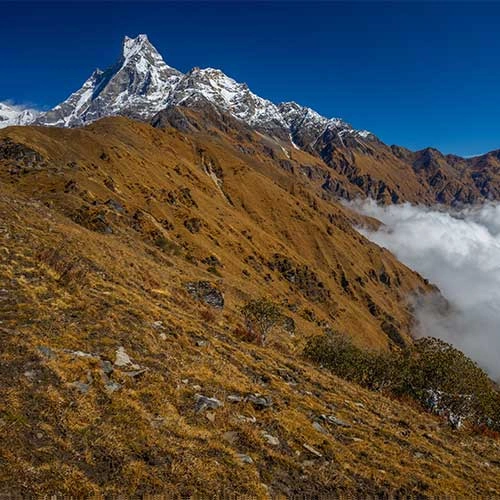Popular Nepali Breakfast Dishes
These are some of the most popular Himalayan delicacies as well as popular Nepali breakfast delicacies that you can enjoy during your visit to Nepal.
Tibetan/Gurung Bread

Tibetan bread (kur), also known as Gurung bread in the Annapurna region, is one of the most popular Nepali breakfast dishes during the Himalayan trekking adventures in Nepal. This traditional homemade flatbread is available throughout every teahouse in the trekking route. Tibetan bread is prepared by frying organic white flour in a pan; this bread is usually prepared with oil or butter.
This is a staple dish a traditional delight in the Himalayan region, and a great way to start your trekking adventure. You can enjoy this fluffy bread with a variety of side dishes, including jam, butter, and honey; Tibetan bread also tastes delightful in plain state and goes really well with a cup of coffee/tea.
Tsampa Porridge
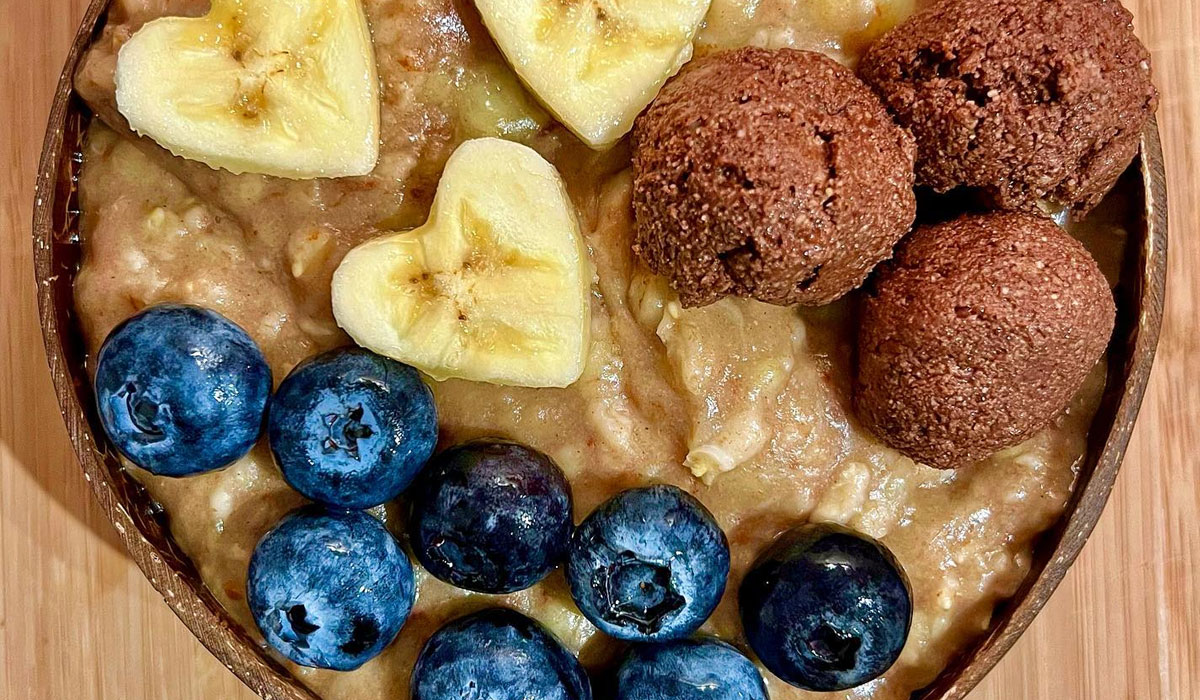
In the list of healthy Nepali breakfast menus to start your everyday journey light and full of energy, Tsampa porridge is one of the most favored delights. This Tibetan culture-influenced delicacy is prepared with roasted barley, and by grinding them into flour. This is among the popular breakfast dishes among the Sherpa communities due to its rich-nutritious values and as it helps to keep the body warmer at the colder alpine altitudes.
As this delightful breakfast dash is already cooked, it can be mixed with pretty much anything. You can enjoy it with a bowl of warm milk or water and add sugar/salt according to your preference. Even though Tsampa is a complete and nourishing breakfast menu in itself, you can also enjoy it with a bunch of side dishes like vegetables, pickles and berries.
Chapati
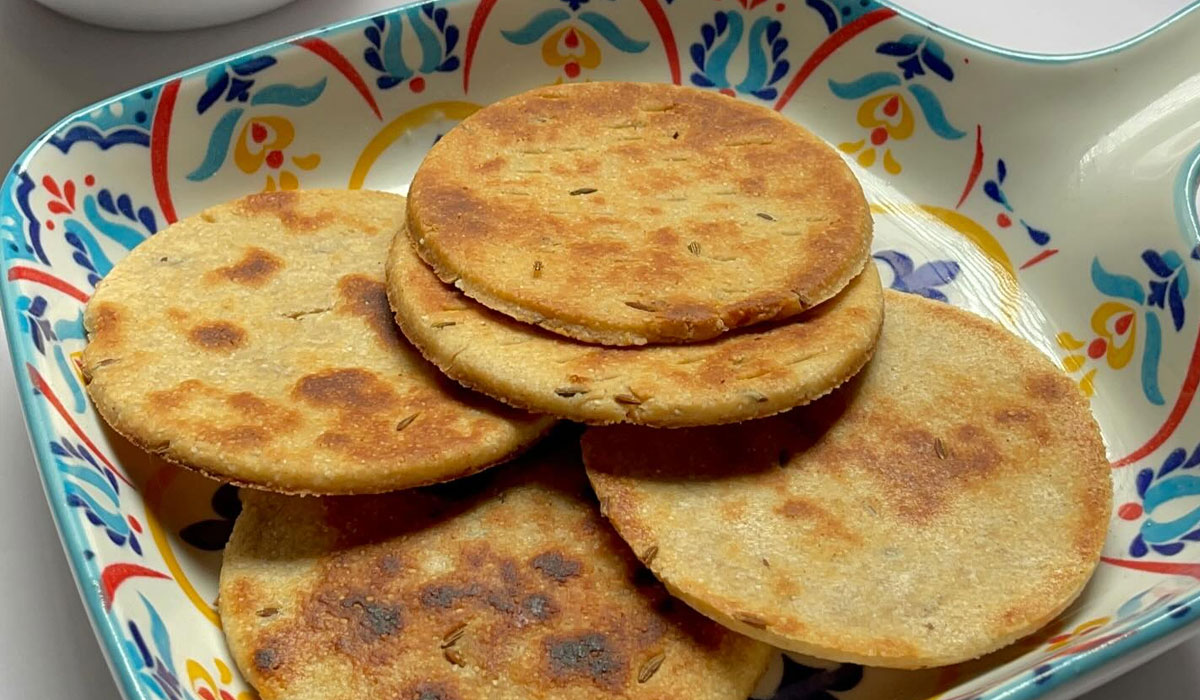
Chapati is a traditional flatbread breakfast menu served at teahouses in almost every trekking destination in Nepal. This delicious breakfast dish is prepared with whole wheat flour and is fried in a pan with ghee or oil. Chapati is a staple dish in many South Asian countries and originated from the Indian subcontinent. As this dish is light in nature and is nourishing, if you don’t prefer starting your adventure with the oily option, you can also enjoy it cooked plain.
If it's fried on oil or ghee, it has a crunchy outlook and is bursting with savory flavor. In case if you prefer it without the oily bits, then it has a soft texture that is easy to break and literally tastes amazing with anything. This whole wheat dish goes really well with sauce, spices, vegetables, and pickles. You can also roll it jam filling or spread butter on top according to your taste.
Tingmo

Tingmo is generally referred to as the ‘Tibetan fluffy bread’ and is a staple Nepali breakfast dish in the Himalayas. This popular breakfast at the teahouses in Nepal is generally prepared with wheat flour, yeast, sugar/salt, and steamed until it is ready. The cooking style of this traditional Sherpa community is pretty much similar to the famous lunch delicacy Momo; the only difference is that the Tingmo bread doesn’t have any fillings.
This fluffy bread has a soft texture and a plain taste that blends really with pretty much anything. Tingmo is usually served with vegetable dishes, sauce, and curries, but you can also enjoy it with coffee/tea, jam, honey, and butter if you prefer. The side dishes for this breakfast menu add nutritional value to the meal, so you can choose the right set of side dishes to make your meal healthy and delightful.
Museli With Milk/Hot Water

If you are looking for a slightly different taste distinct from the regular warm meal option, then this cold Swiss breakfast menu can be an incredible nourishing variant. This healthy breakfast dish in the Himalayas is prepared with rolled oats as the primary ingredient, and nuts, seeds, and dried fruit are added to enhance the taste. You can also add species, salt, and sugar according to your preference to enjoy this dish.
This incredibly healthy delight found at the teahouses in the Nepali Himalayas can be enjoyed with yogurt and fruit juice. If you want to consider the cold climatic conditions at alpine altitudes, you can also relish it with warm milk and hot water. Muesli is one of the most filling and energizing breakfast options perfect for the long day of adventure up ahead.
Toast

Among Western travelers, toast is one of the most popular breakfast dishes during exploration of the Himalayas. Although the toast is not the typical Nepali breakfast menu and natives generally prefer the flatbread variants, you can still find the toast menu at almost every teahouse in the Himalayas. You can enjoy diverse variants of the toast, from regular white bread toast to brown and all-grain bread.
Toast is generally served with butter, honey, cheese, or jam, along with tea/coffee that suits the Western palate. If you are open to the blend of cultural diversity, you can also enjoy it with curry, sauce, or pickles, which are rich flavors of traditional spices.
Egg Items
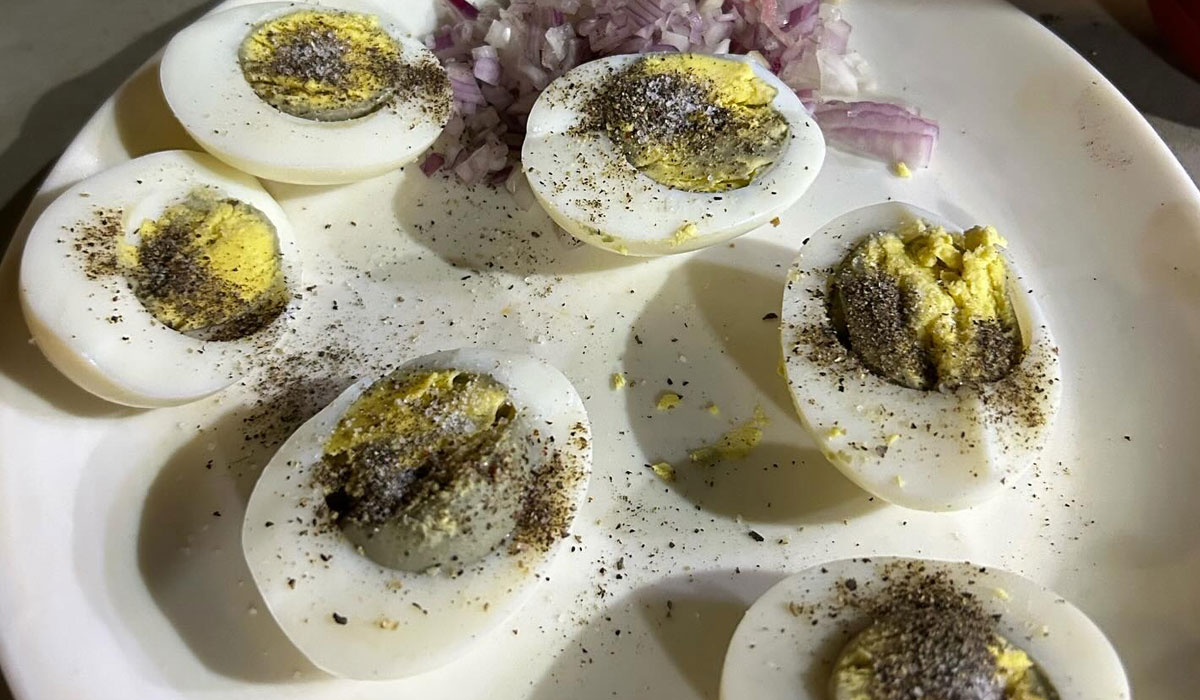
Eggs items are among the most popular breakfast delicacies across the world. You can also enjoy several variants of this nutritious and nursing breakfast menu, like boiled egg, omelet, scrambled egg, egg hash, etc. You can also enjoy egg dishes several vegetable options, toast, beans, and fruits as a salad. Egg items for breakfast are certainly flavorful and nutritious dishes to fuel yourself for the long day of journey up ahead.
As eggs are the most common household ingredient, unlike other regions' specific menus, you can enjoy these delightful delicacies during trekking adventures in every Himalayan region. Eggs are a good source of protein; they are also rich in unsaturated fat and other vital nutrients. So, if you want to follow a healthy meal plan during your exploration, starting the day with breakfast that includes egg items is an ideal option to oversee your nutrient intake during the trip.
Buckwheat Bread
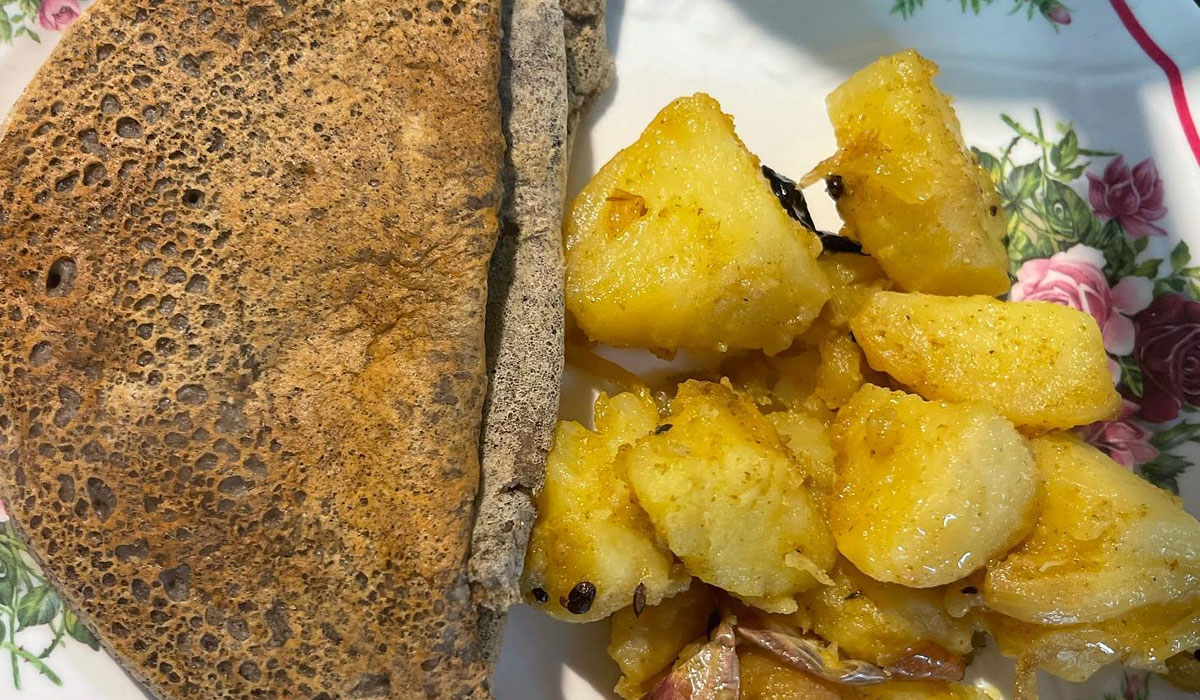
Buckwheat bread is one of the incredible Nepali breakfast menus that has high nutritious value. This unique distinct from the regular bread menus in Nepal is also known as ‘Fapar ko Roti’ as it is prepared with buckwheat flour (Fapar) and has a unique taste and texture. As buckwheat is richer in protein, fiber, and antioxidants than other flour, this is one of the most healthy alternatives for travelers who prefer flatbreads for breakfast.
This delightful breakfast delicacy can be either fried in oil/ghee or plain on the pan, according to your preference. This staple dish in the Himalayas tastes really good with curry and vegetable side dishes. You can also enjoy it with a warm cup of coffee or tea as q quick snack as well during a snack break on the trekking trails to keep you energy bar at an optimum level.
Sel Roti
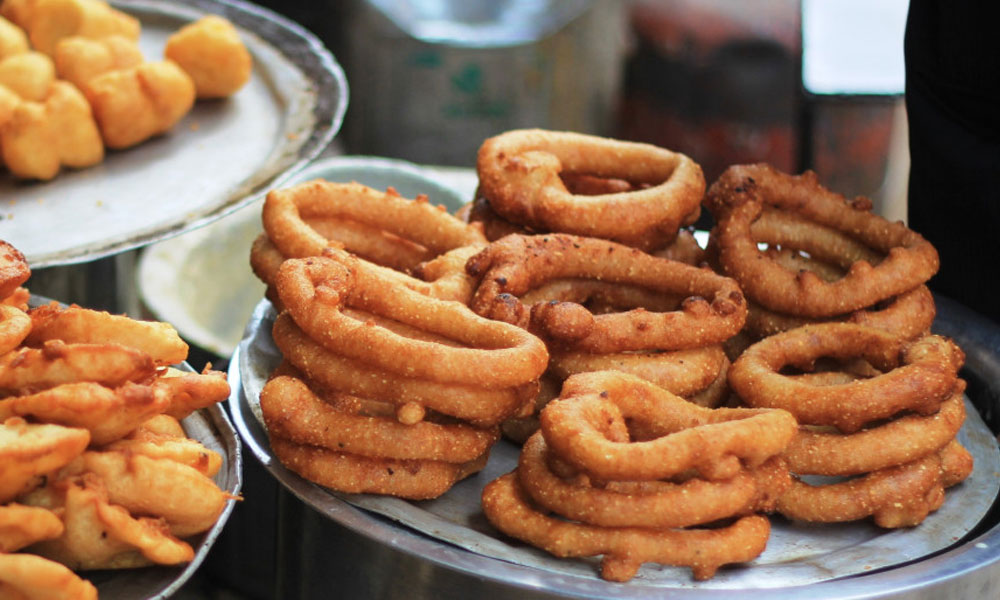
Sel roti is a traditional Nepali breakfast that is generally prepared on special occasions. This sweet traditional dish is prepared with rice flour and is deep-fried in oil; it has a crunchy texture but is soft on the inside. Typically considered the Nepali version of the donut, this sugar delight actually tastes very different from the regular donuts.
Various species are also included while mixing the batter for this dish; thus, the taste of this popular traditional breakfast dish in Nepal may vary depending on the courtesy of the chef, as it is available throughout the nation. You can enjoy it with a hot cup of beverage or tasty vegetables if you want to start your day with a sugary treat.
Breakfast Set
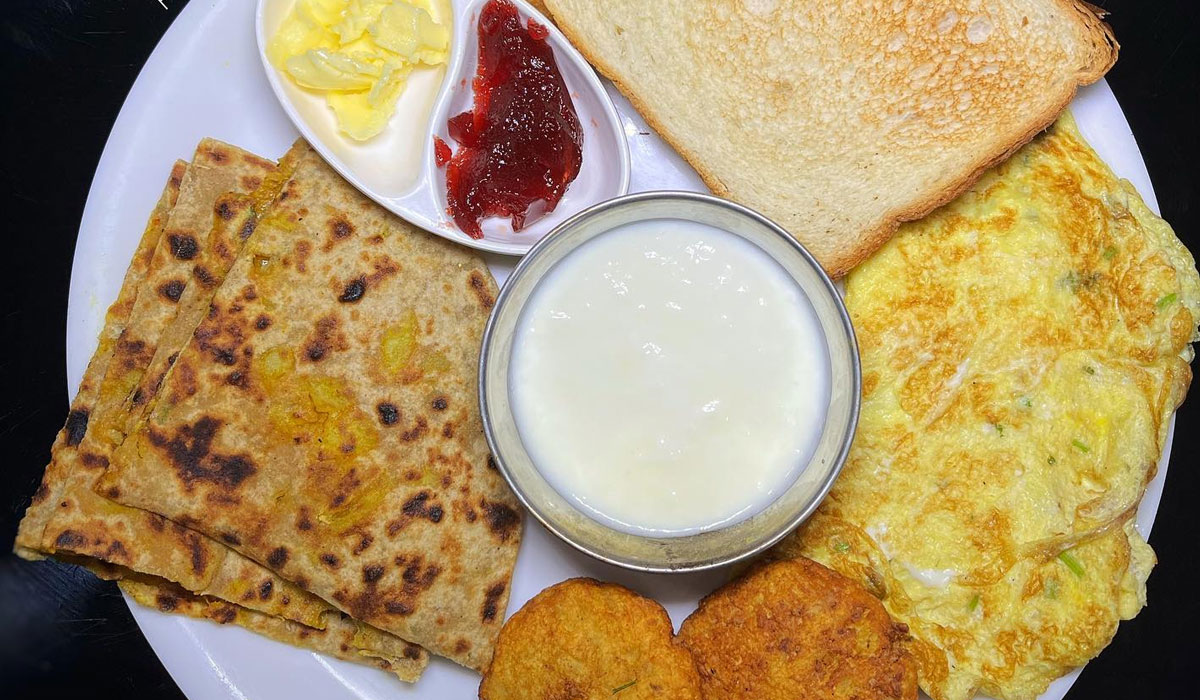
Unlike the above-mentioned single delights for cuisine exploration during the adventure to the Nepali Himalayas, a breakfast set comprises of several popular delicacies that balance the nutritional value. The typical breakfast at the teahouses includes popular menu items like toast or bread, egg items, pancakes, porridge, nutritious vegetables, and even fruits.
Although the items in the breakfast set can vary depending on the region you are trekking to, the average set includes a diverse range of items, including butter, honey, jam, cheese, fruit juice, milk, and tea/coffee. These sets are prepared considering the nutritious value and avoiding heavy items so the trekkers can enjoy a comfortable trekking experience. You can also add or reduce items from the set according to your preference.
Some Helpful Food-Related Tips for Your Himalayan Journey in Nepal
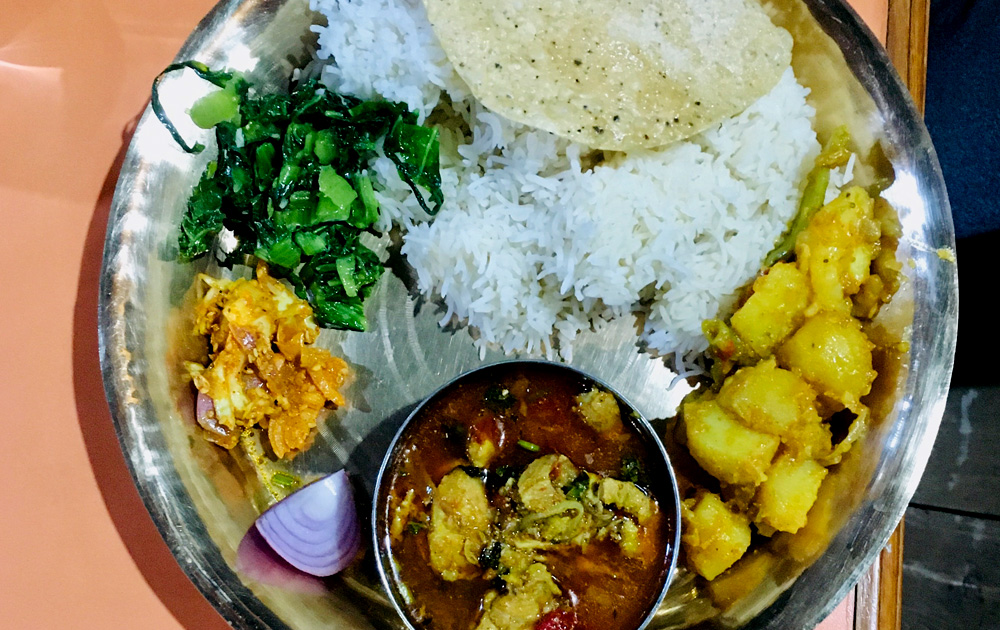
Embrace the Traditional Local Delights
When you are taking part in an adventure of the Himalayan region, remember that you are not just exploring the natural aspects of the mystical Himalayas. But, it is also an opportunity to explore the cultural delights of the country the country. As there is a diverse range of meal options available at the teahouses/lodges, you will be able to taste wide options of delicacies that represent different regions of the county. And there is something for everyone!!
Eat Regularly
It is important to eat a balanced diet at regular intervals when you are taking on a physically demanding journey. Experts recommend that instead of going for big portions, a single meal during the earlier part of the day, you should eat small portions at regular intervals throughout the day. This will help you to maintain your energy level during your adventure, and you will also be able to trek more comfortably.
Pick Easily Digestible and Less Oily Options
Eating fat-rich meals when you are taking on a long day’s adventure is not recommended, as fat is the most slowly digested ingredient by the human body. If you carelessly savor the fat-rich food during your trip, it can cause gastrointestinal discomfort and you might feel nauseous or bloated during your journey.
Pack High-Energy Snacks
If you are going on a trek or mountain expedition in the Nepali Himalayan region, you need to understand it is one of the most isolated and remote parts of the country. There aren’t a lot of teahouses along the route besides the major resting destination, so it is important to carry high-energy snacks and energy bars to prevent fatigue and maintain your energy level.
Take Care of Your Sanitation
After a long day’s journey, it is also important how you will handle the food as it significantly affects your health. You need to follow a proper sanitation process before handling your food after traversing across the remote and rugged landscapes of the Himalayas. You can pack hand sanitizers or handwash and sanitize yourself properly before eating your meals, even if you are planning to use a spoon or fork.
Be Careful About Dietary Restrictions
If you are allergic to any particular food or ingredients, you should brief about your conditions with the guide before your Himalayan journey. Your guide will then coordinate with the teahouse/lodges to avoid the ingredients to prepare the meal and be mindful of the mixup of food that you are allergic to.
Avoid Meat Items at High Altitudes
As the Himalayan region is the remote part of the country, most of the remote t trekking regions don’t have access to reliable transportation modes. The teahouses/lodges entirely depend on porters, mules, and yaks for the transport of goods from the lower regions, which can take upto several days. That’s why meat items are not recommended during high-altitude adventures in the region, as they are mostly frozen and not that fresh.
Beware of the Altitude Appetite Changes
Your appetite may decrease as you ascend to the higher altitudes due to the low oxygen levels. It is quite a normal condition that travelers go through during high-altitude journeys; thus, it is important to consume a small portion of nutrition-dense meals routinely during the trip. You shouldn’t switch to packed food or skip meals during your adventure which can increase the risk of altitude sickness as you will lack proper nutrient balance.
Monitor Your Hydration
Hydration is a key factor to avoid altitude sickness during any high-altitude journey. Your hydration intake should be a minimum of 3-4 liters during your high-altitude adventures. Drink an adequate limit of fluid, including water, herbal teas, soup, and electrolyte-rich beverages throughout the trip to maintain the water level in your body.
Are Vegetarian and Vegan Options Available in Nepal?
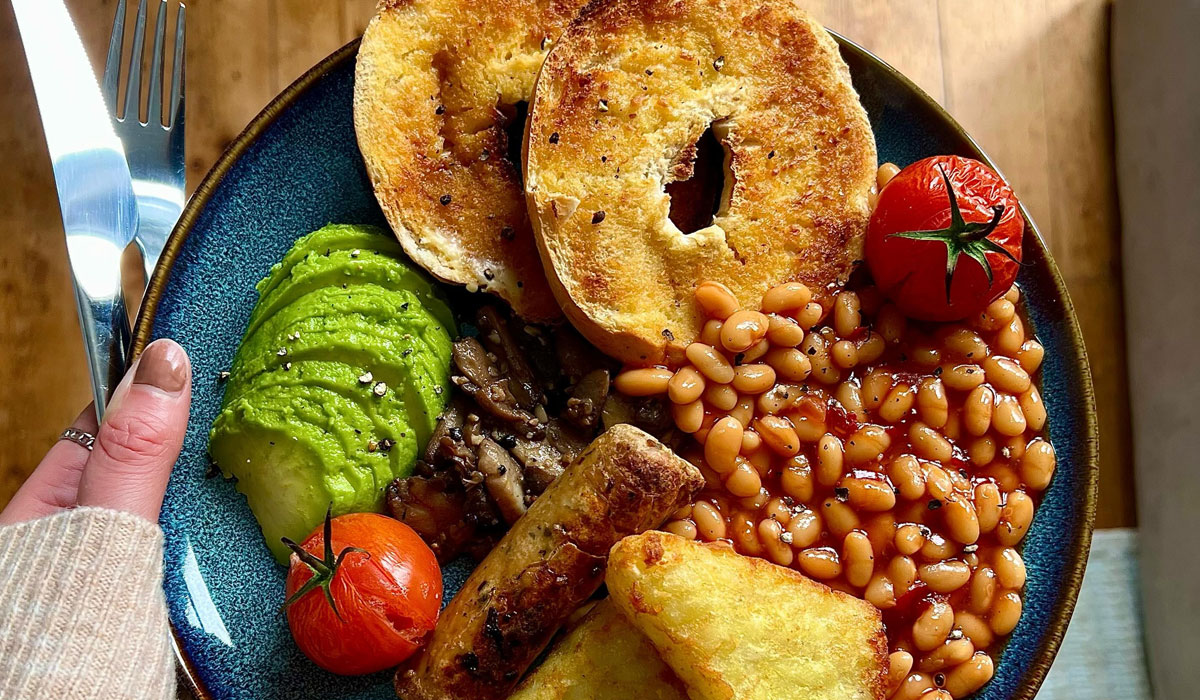
There are still a large number of vegetarians in Nepal, and almost every restaurant/hotel in the country prepares both meat and vegetarian meals. Similarly, the teahouses/lodges in the Himalayan region also prepare vegetarian and vegan options to accommodate the needs of every traveler. You can also request the chef to remove any particular ingredient you don’t prefer in your meal.
As Nepal has a rich tradition of vegetarian cuisine, and most of the dishes are based on staple ingredients like rice, lentils, vegetables, flour, etc., it won’t be that difficult for you to find the delightful dish that fits your palate and preference. Still, although there is a wide range of vegan and vegetarian meal options available in the lower Himlayan region, as you ascend to the higher altitudes, the food items are much simpler. Both meat and non-meat menus are in limited numbers in the higher regions, so you will have to make do with what is available.
You may also like:
Is Nepalese Food Healthy?
This beautiful Himalayan country boasts a wide range of cultural delights, but not only are they tongue-lingerie tasting with bursting flavors of natural species, but they are also a perfect blend of nutrients. For example, the traditional Nepali dish and the national dish, Dal Bhaat Tarkari, which is a common household meal throughout every part of the country, comprises of lentil soup, steamed rice, vegetables, and other side dishes. This is one of the healthiest examples of a perfectly balanced meal with rich nutritious value as this dish is rich in protein, vitamins, magnesium, carbohydrates, fiber, antioxidants and other minerals that are good for overall health and the immune system.
You can get insights into how well Nepali dishes prioritize nutritious values and health benefits from this single cultural delicacy. Similarly, other traditional meals in the country are also prepared considering health benefits, so, yes, Nepalese food is both healthy and remarkably well balanced. On top of that, spices like turmeric, cumin, ginger, coriander, bay leaves, cloves, cardamom, mustard seeds, etc., which have several health benefits, are used to prepare the dishes so besides relishing the enhanced taste of food with these natural herbs, you can also reap the health benefits.













